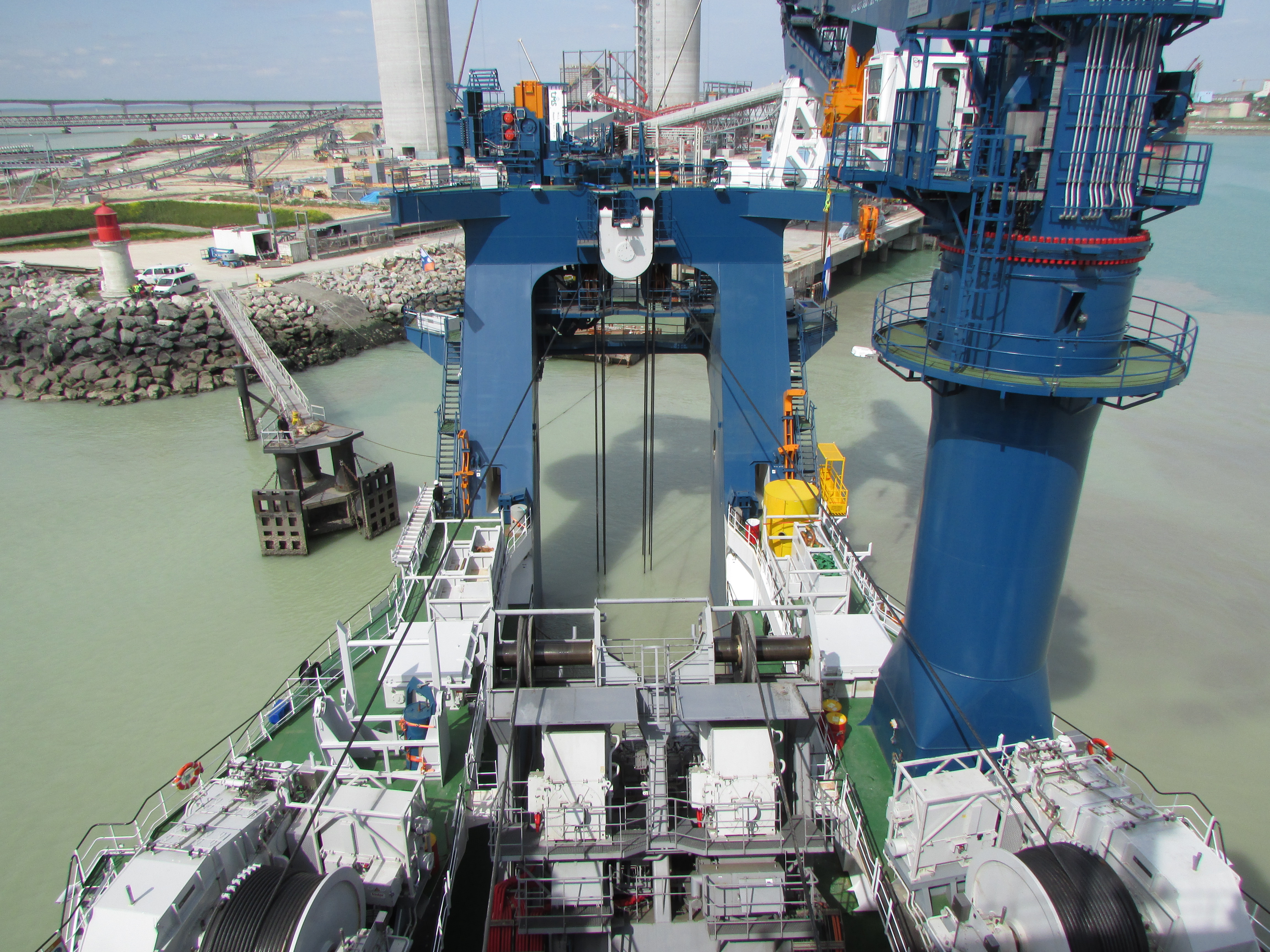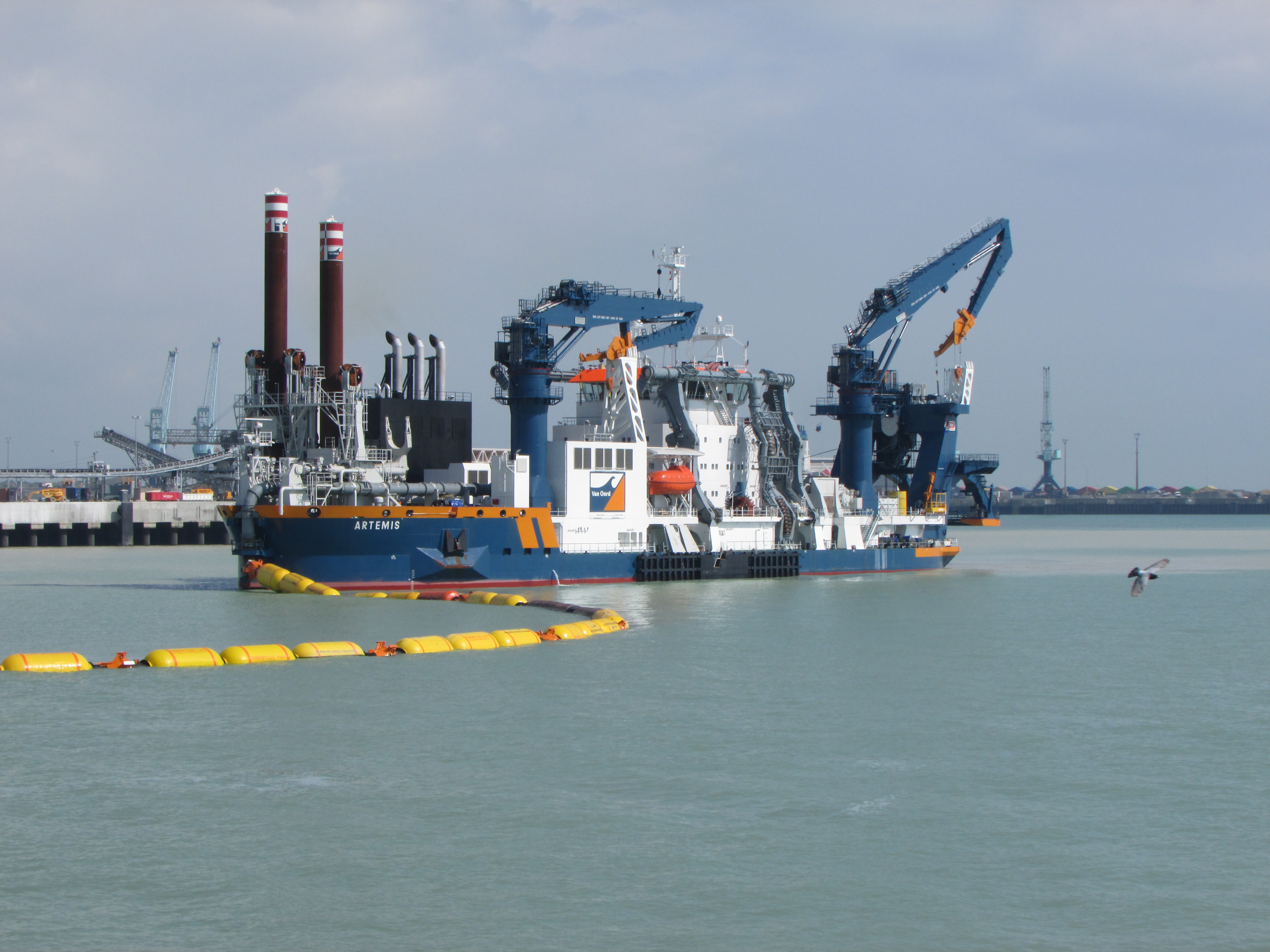Choosing the right vessel for the job: CSD ARTEMIS

In 2013, Port Atlantique La Rochelle (PALR) carried out an important project to deepen two sections of its port in France. These were located along the Quay Lombard in the centre of the port zone and in the Anse Saint-Marc to the north. The impact of the work done needed to be minimal as to not interfere with shipping traffic.
Van Oord’s powerful self-propelled cutter suction dredger (CSD) ARTEMIS, built at our shipyard in Kinderdijk, carried out the work on its maiden project and proved to be the perfect choice for the successful completion of this vital project.
An essential project
In order to cope with the continuing growth in vessel size, as well as the increasing demand for cargo handling, the project was deemed essential for the port’s future. Three objectives were identified by PALR:
- modify the general access and manoeuvring conditions for shipping traffic
- allow larger vessels to use the port
- increase the handling capacity of the terminals.
The task at hand
How can you balance delicate dredging and the closure of sections of the port and ensure minimal impact to business operations? By ensuring you have the right vessel and equipment.
The dredging operation along the Quay Lombard was highly delicate. Work had to be carried out close to the quay wall, but due to its location in the centre of the port, it interfered with the shipping traffic. In fact, the dredging in some sections along the Quay Lombard could only be carried out with a large part of the port completely closed.
With the exception of one trench, the ARTEMIS had to dredge to a depth of -10 metres CD (chart datum), which roughly represents a deepening of one-and-a-half metres. The trench in question is a pocket that measures 210 by 45 metres along a new quay in the Anse Saint-Marc. This had to be dredged to a depth of -14.50 metres CD, allowing moored vessels with a draught of more than 10 metres to stay afloat during low tide.
Approximately 500,000m3 of material had to be excavated, of which almost 50,000m3 had to be dredged from the trench in the Anse Saint-Marc. The material mainly consisted of rock, chalk and clay, with an average strength of 12MPa.
This requirement immediately proved that the ARTEMIS was the perfect vessel for the job. Although a slightly less powerful CSD could have still done the work, it would have taken an unacceptably long time, potentially up to several weeks. With the ARTEMIS however, these sections could be dredged within a few days, which meant that the port only needed to be closed for an extended weekend.
This was highly appreciated by the PALR. In close consultation with its clients, it could schedule activities during this weekend in such a way that the business impact was negligible.
Maximum power
During this operation, it was not just a question of sheer breaking force on the pick points of the cutter which were necessary to break the cohesion of the material. It was also crucial to deliver enough power to cut the material loose with high efficiency and make it ready to be handled by the pumps.
Thanks to the configuration of the ARTEMIS, it is able to dredge this type of material with a high production rate. While the cutter and its pick points (delivering 7,000kW of power) took care of breaking and cutting loose the material, the dredger’s pumps moved the material to a disposal site two kilometres away. Using one submerged and two on-board pumps, the CSD delivers a combined pumping power of 15,000kW.
At all times, the ARTEMIS has demonstrated that it was the perfect choice for the successful completion of this vital project



Port Atlantique La Rochelle (PALR)
One of the main activities on site is the export of cereals, for with the Quay Lombard is the designated terminal. The Anse Saint-Marc is home to a recently commisioned terminal that is dedicated to break bulk cargo. Cement producer Holcim regularly uses this zone for the import of raw materials, such as steel slags. Due to the increasing demand for handling capacity, PALR will build a second quay wall in the Anse Saint-Marc. The port of La Rochelle also has terminals for the handling of wood and oil products, and acts as a shipbuilding and repair yard. The oil terminal is located at the western extremity and is the only facility of tis kind in France with deep-water access. It is frequently used to lighten oil carriers before they sail to other French ports.

Can we help you?
Want to learn more about our solutions to help fulfil your tenders? Get in touch and one of our experts will help you!